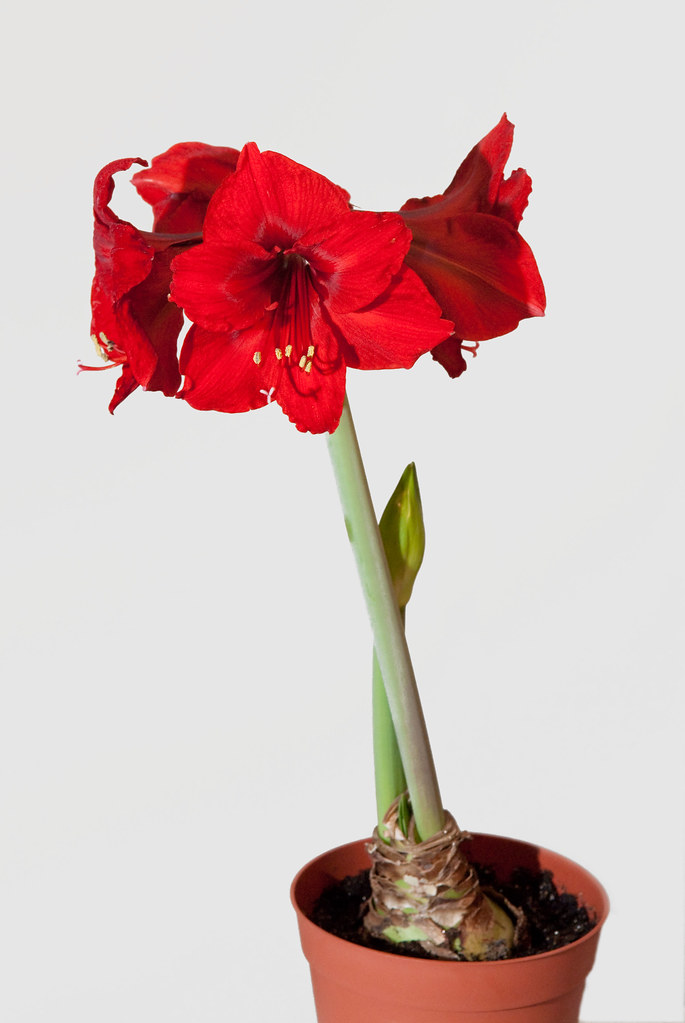For many of us, the middle of December could be described as bleak. Greenery and beautiful flowers around the holiday add color, life, and cheer to any home during even the coldest days of winter. The following holiday plants make excellent additions to your holiday decor and give you the opportunity to continue getting your gardening fix during the winter.
1. Amaryllis
Amaryllis is a small genus of flowering bulbs that are native to Peru and South Africa. These plants produce red, white, orange, and pink trumpet-shaped flowers that look spectacular on a winter windowsill. Amaryllis flowers grow to be between 4 and 10 inches in size. The flowers can be either single or double in form.
Amaryllis plants are purchased either as bulbs or planted flowers. If taken care of properly, these plants will produce flowers for several years.
After the blooming period is over, cut the flower off of the stalk. This will prevent seed formation which requires a lot of the plant’s energy. Put the plant in a location that is exposed to plenty of sunlight and water every two weeks. When spring arrives, plant the bulb in the ground or in a container outside. Fertilize the plant with an all-purpose fertilizer once per month until September.
Around September, bring the bulb inside and allow the foilage to die down. Once the plant goes dormant, ignore it (no watering or fertilizing) for a while. Once you see a sprout growing out of the bulb, put it in a sunny spot and start watering it regularly. After several weeks, the plant will flower.
Amaryllis are toxic to pets. These plants contain narcissine and other alkaloids which can cause vomiting.
2. Christmas Cactus

The Christmas Cactus belongs to the Schlumbergera genus, which is a small genus comprised of plants that are native to southeastern Brazil. Schlumbergeras have flattened stems called phylloclades which are photosynthetic shoots that are considered to be modified branches. Because the phylloclades are responsible for photosynthesis, there are no true leaves on Schlumbergeras.
Thanksgiving Cacti, which look very similar to Christmas Cacti, are sold as Christmas Cacti during the holiday season. Unfortunately, Christmas Cacti are no longer sold in the United States because Thanksgiving Cacti bloom earlier and are available in a wider variety of colors. If you want to get your hands on a real Christmas Cactus, you will have to obtain a cutting from someone who already has one. If you don’t know anybody who owns a Christmas cutting, check out eBay or Etsy.
A neat thing about Christmas Cacti/Thanksgiving Cacti is that they will live a really long time. There are Christmas Cacti that have been passed down one or two generations. If properly cared for, these plants will continue to bloom throughout their lives.
To learn more about growing Christmas Cacti, check out this article I wrote.
3. Anthurium
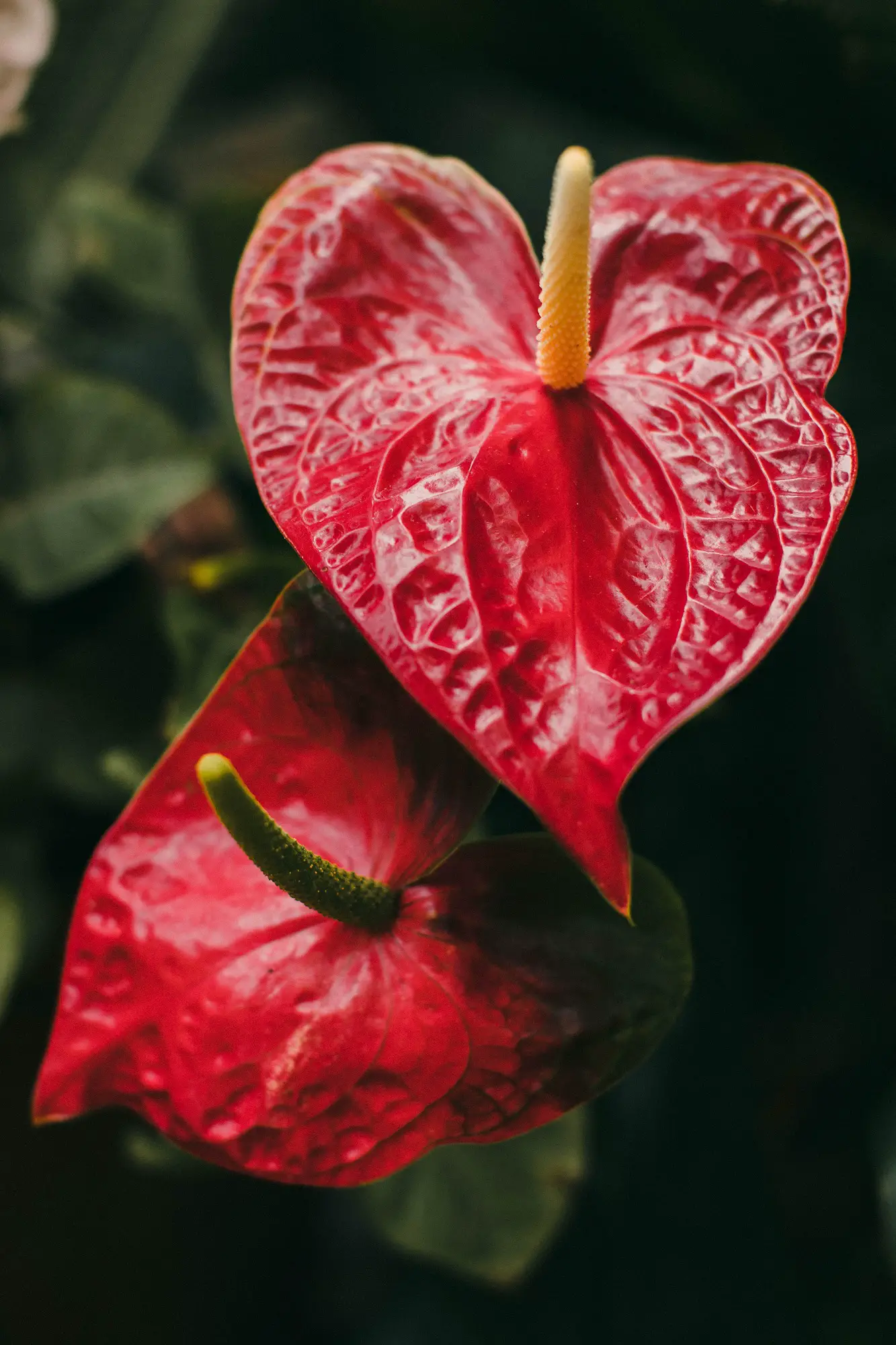
Anthuriums are popular houseplants known for the beautiful red spathes. These red spathes make them popular plants during the Christmas/holiday season. Anthurium is actually a large genus comprised of over 600 species of plants. The most common type of Anthurium sold in stores is a hybridized version of Anthurium andreanum.
Anthuriums are native to tropical and sub-tropical rainforests in Central and South America. In their native habitat, these plants grow as epiphytes rather than in soil. Interestingly, the colorful, heart-shaped part of the plant is not actually a flower. It is a spathe, and its purpose is to protect the spadix. The spathe surrounds the spadix which is the cone-shaped structure that contains the plant’s small flowers.
A neat thing about Anthuriums is that they will produce blooms year-round as long as they are happy with their environment. Each bloom lasts 2-3 months. However, these plants will lose their blooms if they are not happy. Inadequate exposure to light is the most common reason Anthuriums do no bloom.
To learn how to get Anthuriums to rebloom, check out this article I wrote on how to get Anthuriums to rebloom.
4. Christmas Ferns
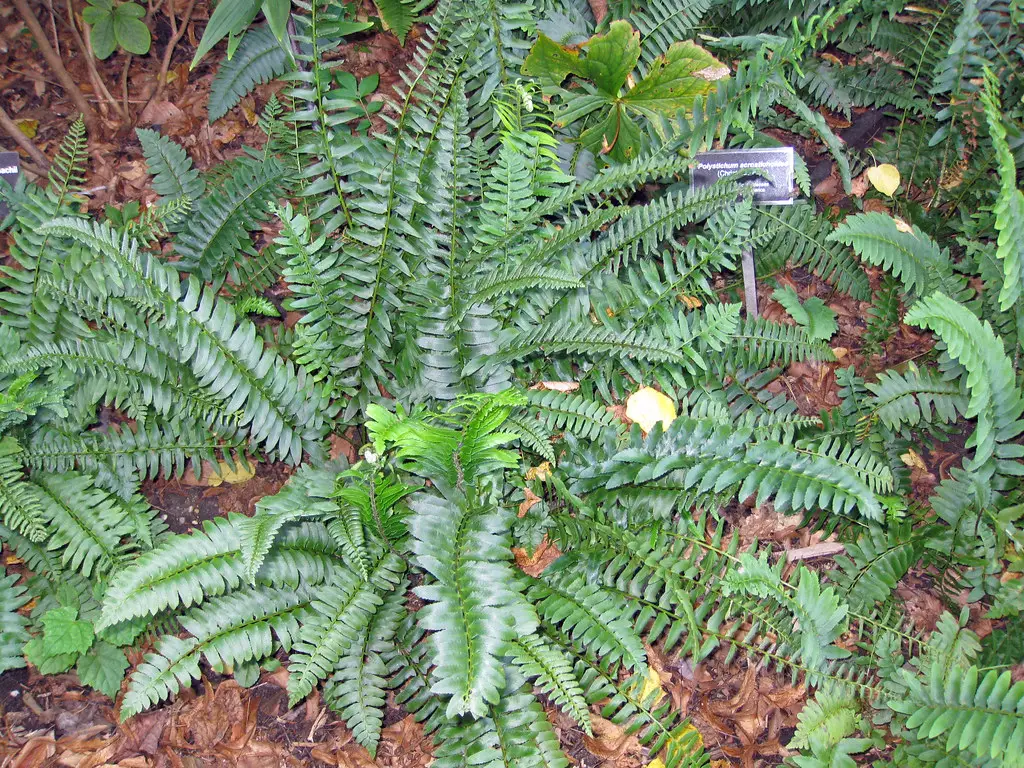
Polystichum acrostichoides, which is commonly known as Christmas Fern because it stays green throughout the holiday season, is another common holiday plant. It is one of the most common ferns found throughout eastern North America. The plant is comprised of fronds that have a glossy appearance and have a leathery texture. The fronds grow in clusters from a crownless rootstock and grow to a length between 1 and 2 feet.
Christmas Ferns grow outdoors in USDA Hardiness Zones 3 through 9. This is a common addition to many outdoor gardens because it is easy to grow and remains green year-round. These ferns grow best on shaded, north or east-facing slopes in humus-rich soil.
This plant can also be grown indoors. The Christmas Fern grows best next to a window that is exposed to morning sun and afternoon shade. Keep the soil constantly moist (not saturated).
5. Poinsettia
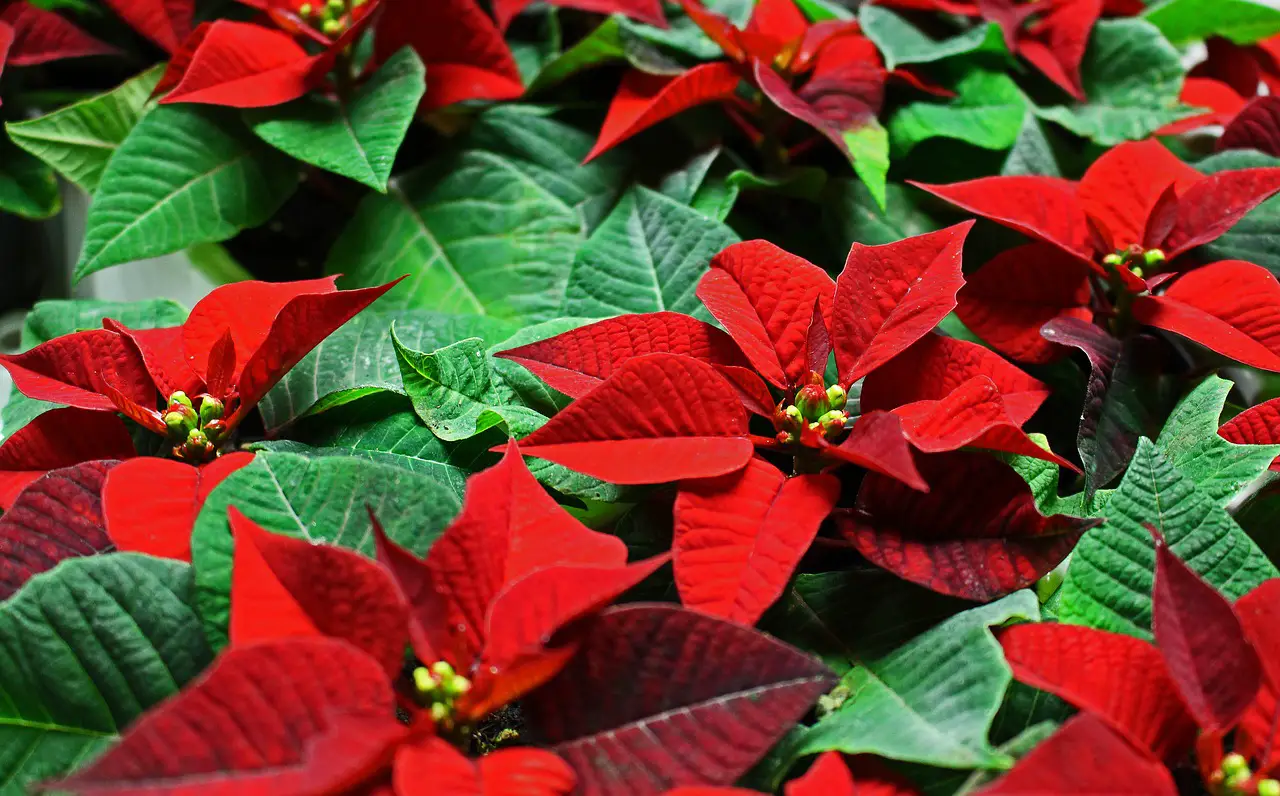
The Poinsettia (Euphorbia pulcherrima) is probably the most common holiday plant. This plant is native to Central America and was first described as a new species in 1834 by German scientist Johann Friedrich Klotzsch. The common name of this plant (Poinsetta) is named for Joel Roberts Poinsett who was the first United States Minister of Mexico. Poinsett is credited with introducing the Poinsettia to the United States during the 1820s.
The Poinsettia is one of the world’s most economically important plants. Each year in the United States, over 50 million Poinsettia plants are sold within a six week period during the holiday season.
This plant’s association with Christmas began during the 16th century in Mexico. According to legend, a girl was too poor to give a gift to Jesus on his birthday and was inspired by an angel to gather weeds from the side of the road to place in front of the church altar. Red Poinsettia blossoms emerged from these weeds. The star-shaped pattern of the leaves is said to represent the Star of Bethlehem that led the wise men to Jesus’ place of birth.
According to the ASPCA, Poinsettas are toxic to cats and dogs. This plant contains a sap that acts as an irritant that results in vomiting. According to the ASPCA website, the toxicity of these plants is generally overrated. The belief that Poinsettias are highly toxic comes from an urban legend that a two-year-old child died after consuming a Poinsettia leaf in 1919. However, a survey of more than 20,000 calls to the American Association of Poison Control Centers related to Poinsettia exposure/ingestion between 1985 and 1992 showed no fatalities.
6. Christmas Tree
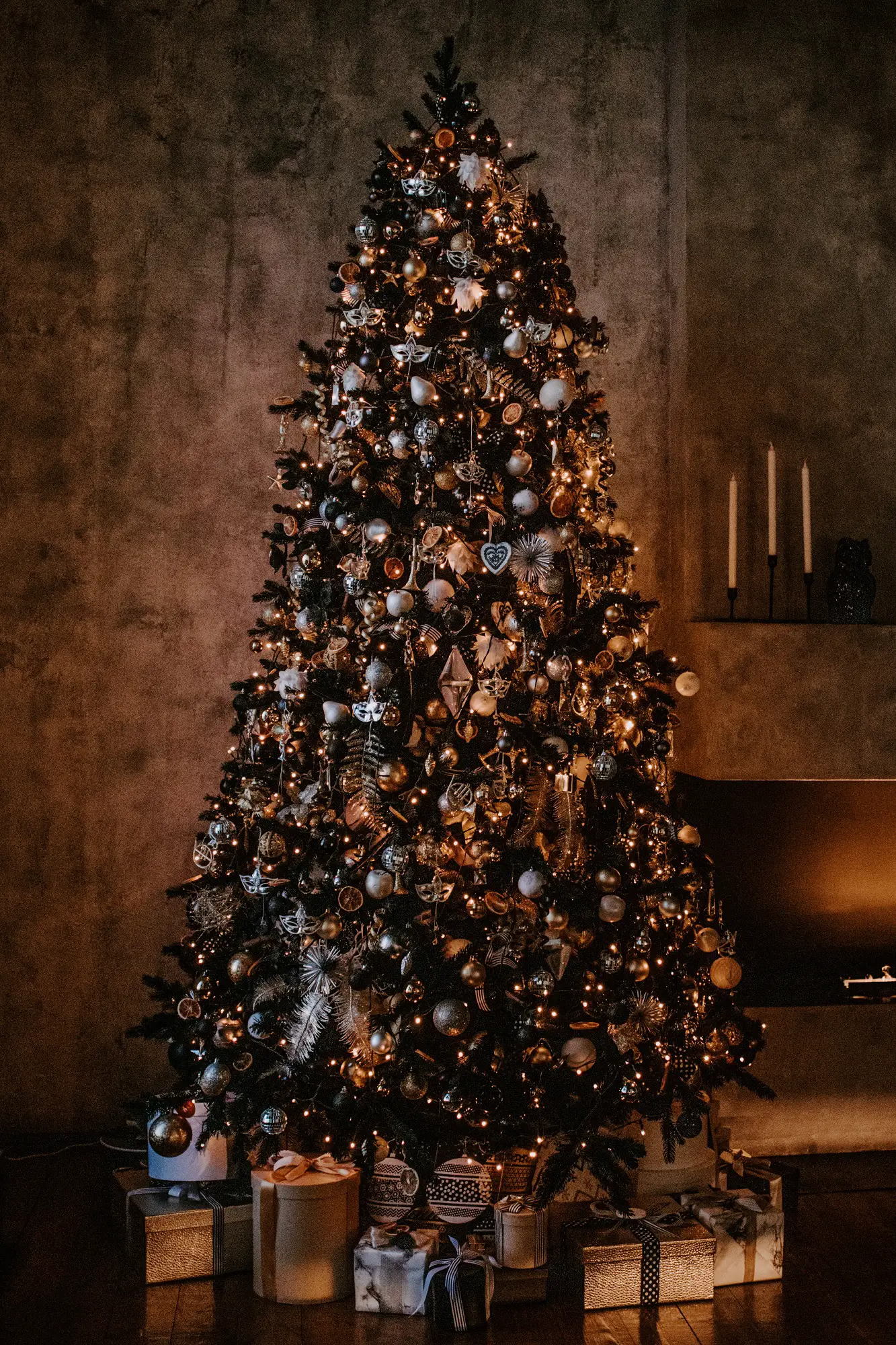
Of course, no holiday plant list is complete without the Christmas Tree! The Christmas Tree has a rich history. Even before Christianity came on to the global scene, people decorated their homes with evergreen trees and plants during the winter months. In many cultures, people believed evergreen plants such as pine, spruce, and fir trees kept away witches, ghosts, evil spirits, and illness.
The Christmas Tree tradition as we know it today started in Germany. During the 16th century, Christians would bring decorated trees into their homes. It is believed that Martin Luther added the first lighted candle to a tree.
During the 19th century, most Americans did not embrace the Christmas Tree tradition. As late as the 1840s, Christmas Trees were seen as pagan symbols and not accepted by most Americans. The Christmas Tree rose in popularity during the 1890s. Americans started putting Christmas Trees in town squares after the invention of electricity.
Today, Christmas Trees are grown throughout the United States in varying environmental conditions. In fact, Christmas trees are grown in all 50 U.S. states including Alaska and Hawaii. However, the Pacific Northwest remains the biggest producers of Christmas Trees in the United States.
7. Mistletoe
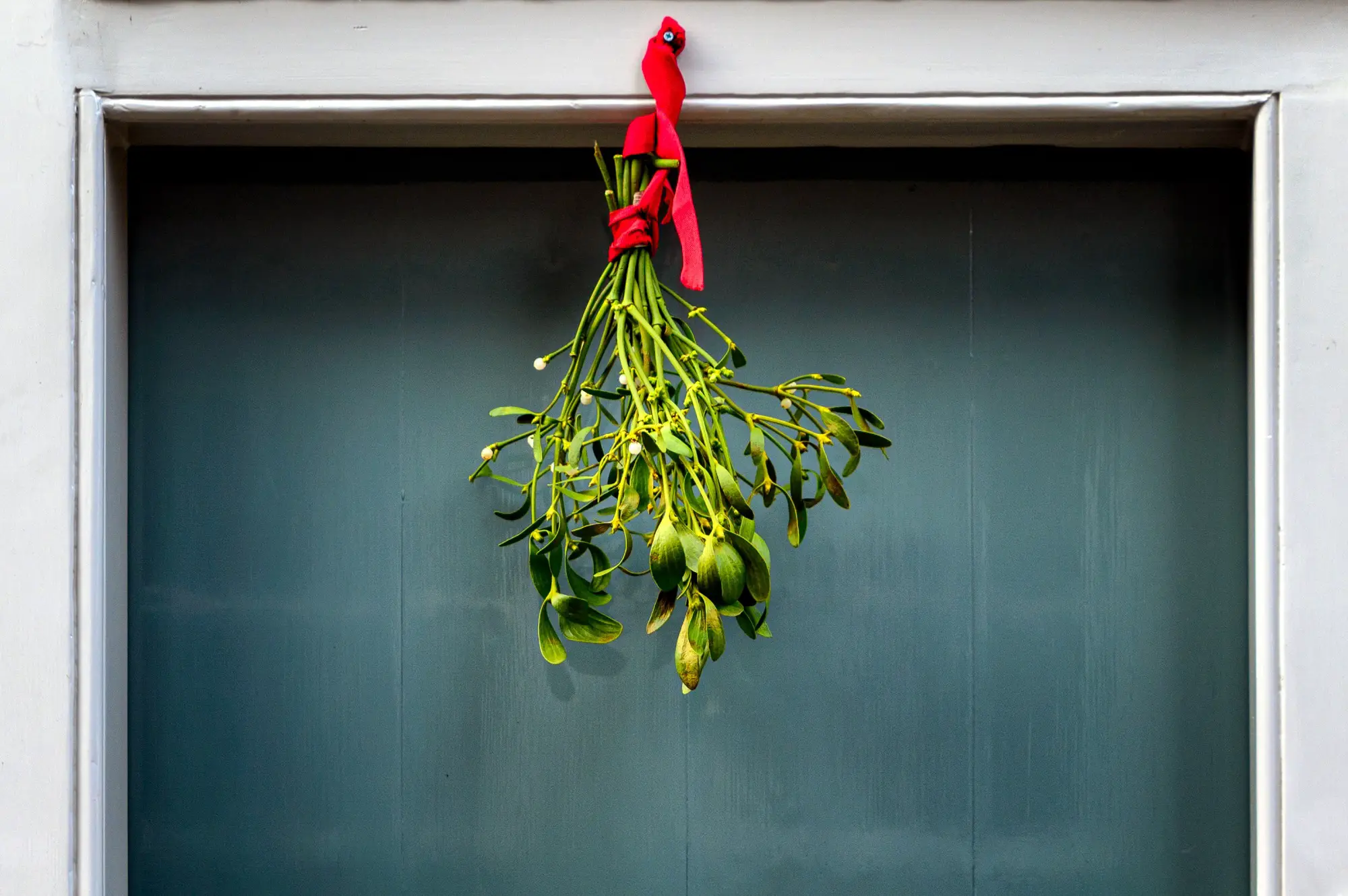
Mistletoe is a common name for obligate hemiparasitic plants. An obligate hemiparasitic plant is partially parasitic on the roots and shoots of a plant host and cannot complete its life cycle without a suitable plant host.
It is not easy to grow your own mistletoe, but it is possible. Although mature mistletoe requires a host plant to survive, the seeds can germinate without a host plant. Most types of mistletoe can germinate in moist seed flats. Mistletoe also requires a lot of light to germinate, and the seed flats should be kept in an environment that is at least 60°F.
Eventually, the mistletoe will need to be moved to a host plant, but it can be difficult to get your mistletoe to root. Rather than germinating mistletoe seeds, it is easier to grow mistletoe by push the mistletoe seeds into the tree bark and mist the seeds every day. Germination may take several months when applying this method.
Mistletoe does not require very much care, but it is a good idea to give the host plant a little extra love (e.g., fertilizer and water) because the mistletoe will sap the host plant’s energy.
Even after the seeds germinate, it may take 3-4 years to grow just a few leaves of mistletoe.
8. Holly

Holly is a plant that has waxy, pointed leaves. Christians consider Holly a symbol of the crown of thorns worn by Jesus on the cross. In addition, the red berries are representative of the blood Jesus shed when he died on the cross. Holly is also considered a sacred plant by the Druids as the Druids consider Holly a symbol of fertility and eternal life.
In addition to Holly’s importance in religious matters, Holly makes a good Christmas plant because it contains bright red berries. However, bright red berries do not grow on many varieties. When purchasing a Holly bush to grow, select a variety that does not require a male plant and female plant to grow berries.
Holly bushes grow best in well-drained, acidic soil. These plants do not like to be moved, so it is important to select a suitable spot. After planting your Holly bush, water the plant daily. Then apply two inches of water per week, and fertilize your plant once per year.
It is also important to weed Holly bushes often and prune the plant regularly so it does not choke itself.
9. Rosemary

Rosemary Christmas trees have become popular during the last several years. These rosemary Christmas trees can be purchased from big box stores, nurseries, and grocery stores. The leaves of rosemary are needlelike and have a herbaceous, piney smell that makes it similar to Christmas trees.
After the holiday season ends, rosemary Christmas trees can be planted in a garden within USDA Hardiness Zones 7 through 10. Rosemary can be grown as an evergreen perennial in USDA Hardiness Zones 9 and 10. If you live in an area suitable for growing rosemary, plant your rosemary Christmas tree during the spring months once all chances of frost have passed.
It can be difficult to determine whether your rosemary bush needs water because the leaves do not wilt in the same manner as other plants. Rosemary plants grown in the ground do not require much water because these plants grow extensive root systems to obtain water. However, rosemary plants grown in containers should be watered more frequently. Water rosemary plants grown in a container once every 4-5 days during the growing season, and water rosemary plants grown in the ground once every 1-2 weeks.
Rosemary is also easy to propagate. Simply cut a stem from new growth and remove the bottom leaves. Then dip the end of the cutting in rooting hormone and place the cutting in a container of fresh potting mix. Place the cutting in a sunny window and keep the soil moist.
10. Paperwhite Narcissi

Paperwhite Narcissi is a classic Christmas flower known for their paper-thin flowers and beautiful scent. Paperwhite Narcissi is also easy to grow and will grow in a variety of substrates.
Paperwhites will bloom 4 to 6 weeks after planting. Plant bulbs every two weeks from late fall through February to grow continuous blooms throughout the winter. Paperwhites do not require a cooling/chill period to encourage bloom production. This means it is fairly easy to force these plants to bloom by simply exposing the bulb to water.
The easiest way to grow Paperwhite Narcissi is to grow the bulb in a vase of water. Simply place the bulb in a slender or hourglass-shaped vase such that only the bulb’s vase touched the water. It is important to make sure the vase is filled with water to ensure the bulb will form roots.

